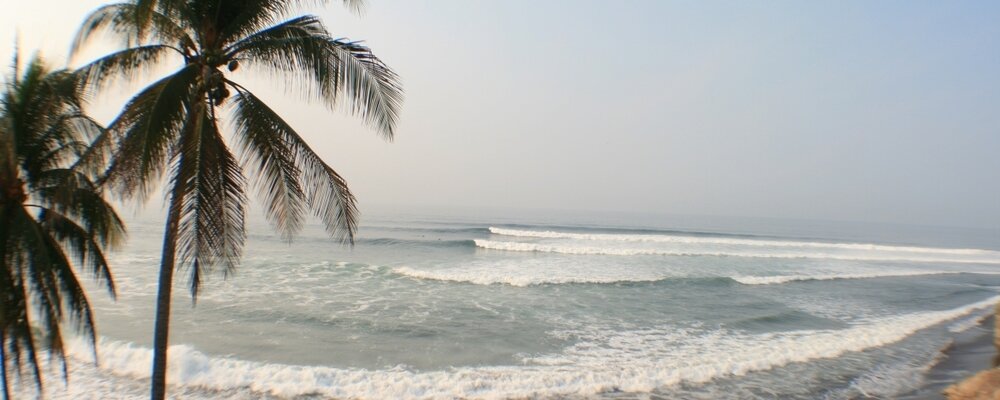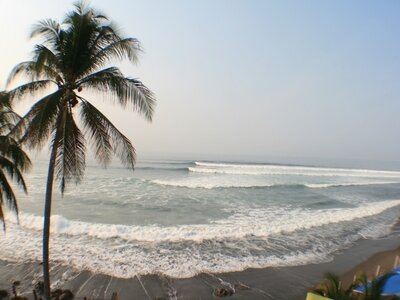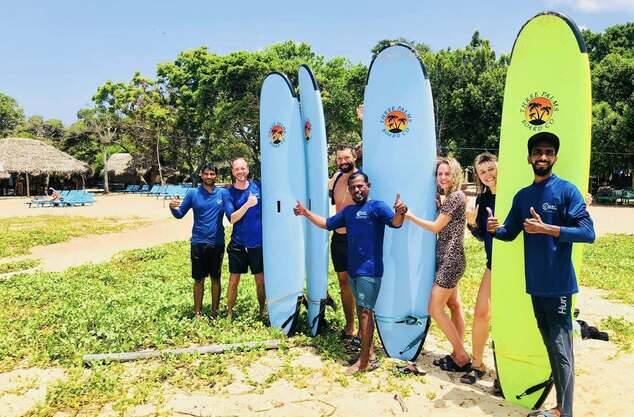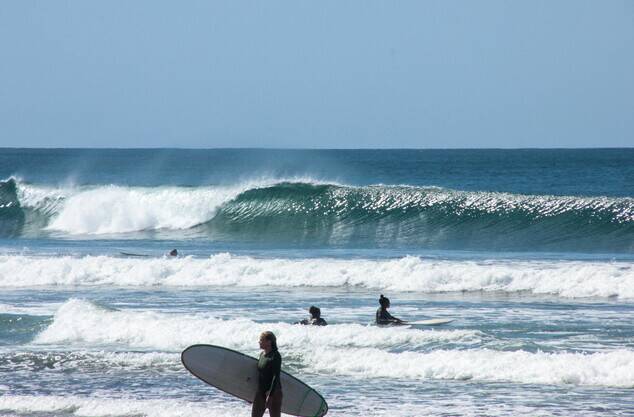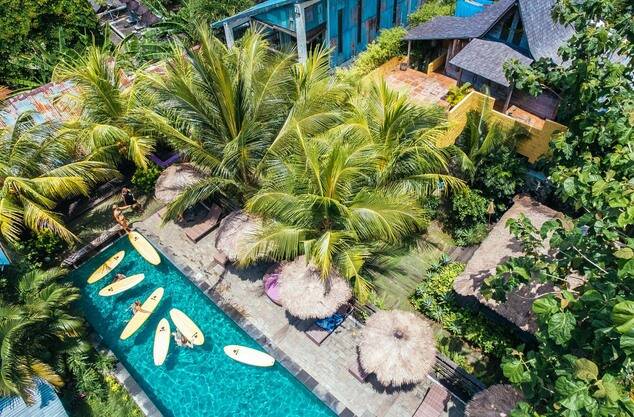EL SALVADOR WAVES AND BEACHES:
El Salvador's 307 kms of Pacific coastline is dominated by at least 10 world class righthand point breaks. Many of these waves break for 100-200 yards and don’t close out, with waves over 300 days of the year. El Salvador borders the Pacific Ocean to the south. The southern coastline that runs the entire length of the country is split down the middle, with everywhere east of La Libertad (a small port town) referred to as the "East Coast," and everywhere west of La Libertad known as the "West Coast." The East Coast is known for great tourist beaches like Costa Del Sol, beautiful mangrove lagoons, and the Las Flores righthand point break. The West Coast is great for fishing and diving, and is where you'll find El Salvador's only lefthand point break, La Bocana, and the most sought after wave in El Salvador, El Sunzal, which is a slow, consistent wave that caters to surfers of every skill level. The dark sand beaches in El Salvador come from volcanic origin and the water temperature ranges from 23°C to 27°C (70-80°F) all year round. The country is famous for its great waves for surfing.
WEATHER: Tropical climate. Summer lasts from November to April and rainy season from May to October. During these months it generally rains in the late afternoon and evening. The average annual temperature is 25°C (77°F).
LANDSCAPE: The territorial extension of El Salvador is 21,040 kilometers², with 307 kms along the Pacific coast extending the entire length of the country. The country's landscape includes numerous valleys, mountains, volcanoes, and coastal low lands. The mother mountain range runs all throughout the country from east to west. El Salvador borders Guatemala to the Northwest and Honduras to the Northeast. Located right in the middle of Central America, is a perfect place to start or pass through when exploring the whole region.
CULTURE: El Salvador's official name is Republic of El Salvador, named after the Spanish word for "The Saviour," in honor of Jesus Christ. The Roman Catholic religion plays an important role in Salvadorian culture. People in El Salvador are very friendly and more used to seeing tourists now than in years passed. Spanish is the main language spoken, although many Salvadorans speak some English as well and are happy to help out non-Spanish speakers when they can. You can find all types of food and entertainment in San Salvador, the capital city, where you will recognize many American businesses and a more "American" way of life. However, throughout the countryside and at the beach, life moves at a slower pace and you will mainly find traditional food available... meat, chicken, seafood, rice and beans, and fresh fruits and vegetables. "Pupusas" are a local favorite (homemade corn or rice tortillas filled with beans, cheese, chicken, or pork, served with sauces). Delicious fruit smoothies "licuados" are a popular treat and there are several local beers to try. Salvadorans are known for being very hard workers and even many kids work to help out their families. Soccer "futbol" is a huge part of life in El Salvador, as well as surfing, and dancing. A popular local saying is "buena onda" which means "good vibes, good times."
SAFETINESS: Locals are friendly and welcoming toward tourists. The war that gave El Salvador an unsafe reputation is long since over. However, like in all Central American countries, we recommend taking guided tours since they will advise you on conflictive areas you should avoid. Hiring a local guide will also make your trip more comfortable in dealing with language barriers, cultural differences, and transportation, since roads and driving manners can be very different from what you're used to.
RESPECT: Always remember to respect the locals and respect the land. Localism at surf breaks exists in El Salvador like everywhere else in the world, but if you are friendly in the water, you will enjoy yourself more and meet some cool new people. Always pack your trash and be as eco-friendly as possible!!
Spot Properties
- Attendance Week
- Crowded
- Attendance Weekend
- Crowded
- Best Tide Position
- Low Tide only
- Best Tide Movement
- Falling Tide
- Dangers
- Rips undertow
- Frequency
- Regular
- Good Swell Direction
- South
- Good Wind Direction
- South
- Holds up to
- >= 5m (16ft)
- Max Length of Wave
- Long (150m - 300m)
- Normal Length of Wave
- Normal (50m - 150m)
- Starts Working
- 1m - 1.5m (3ft - 5ft)
- Surf Level
- All Surfers
- Type of Bottom
- Sandy with Rocks
- Type of Wave
- Pointbreak
- Wave Direction
- Righthander
- Wave Power
- Fun

